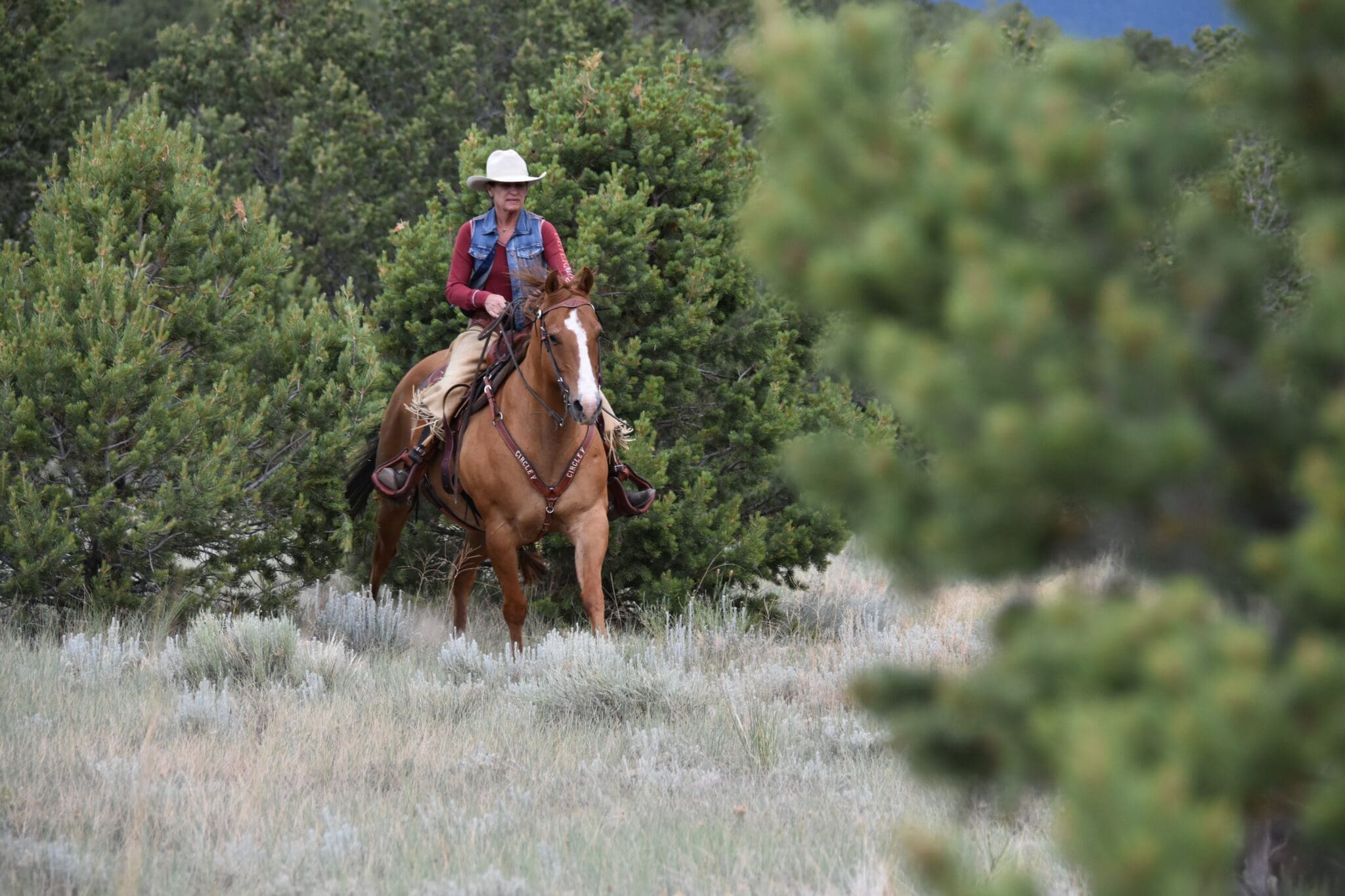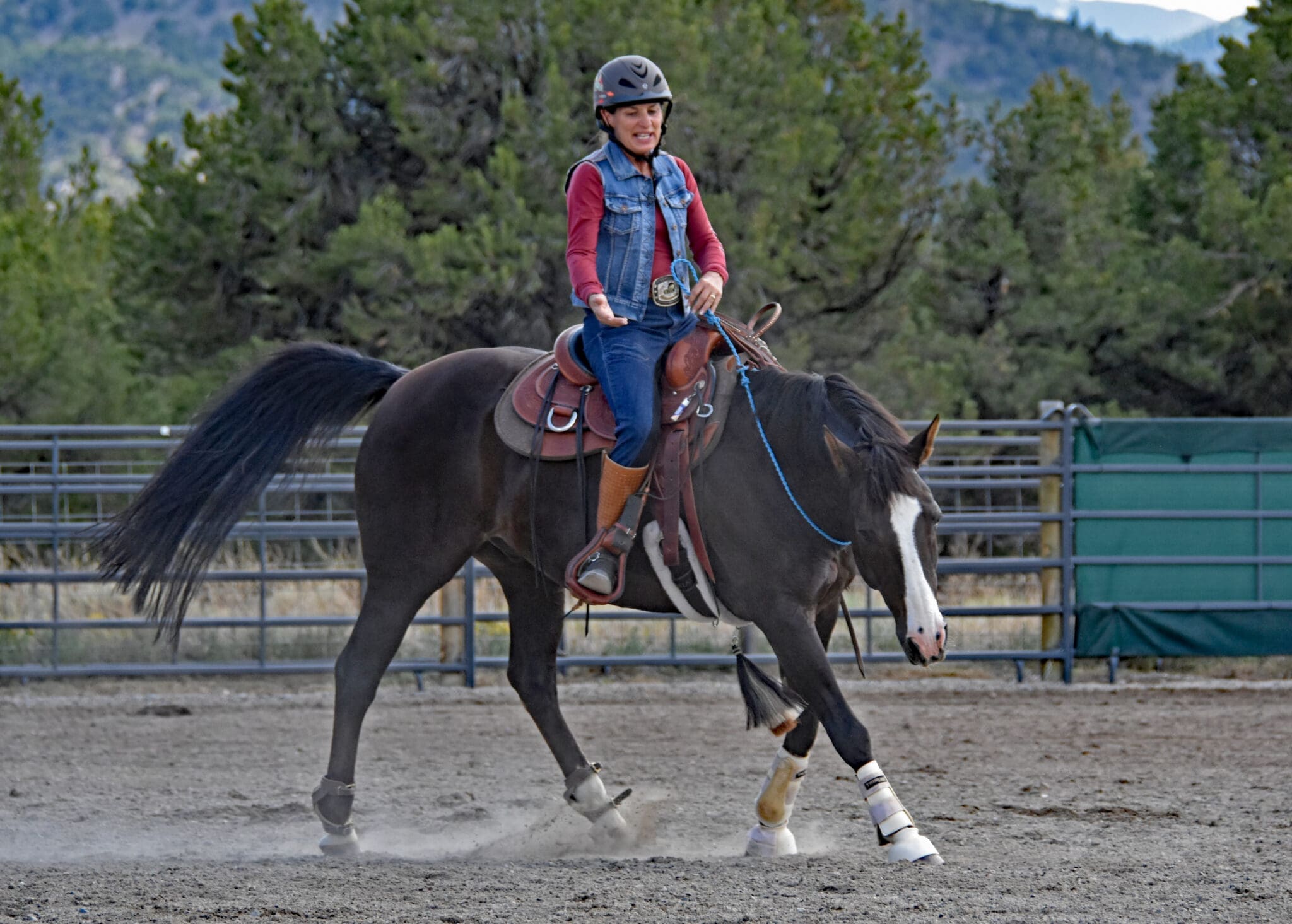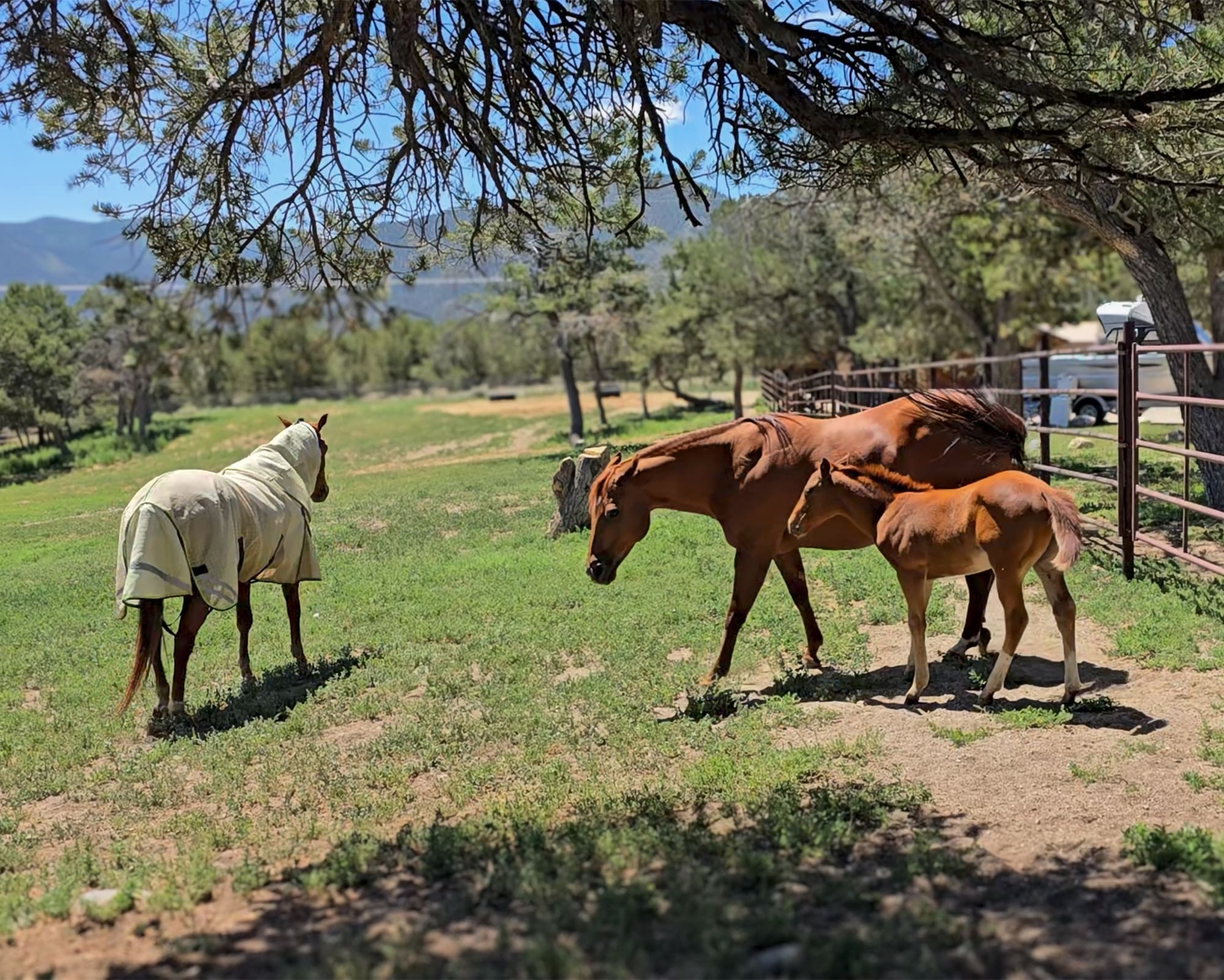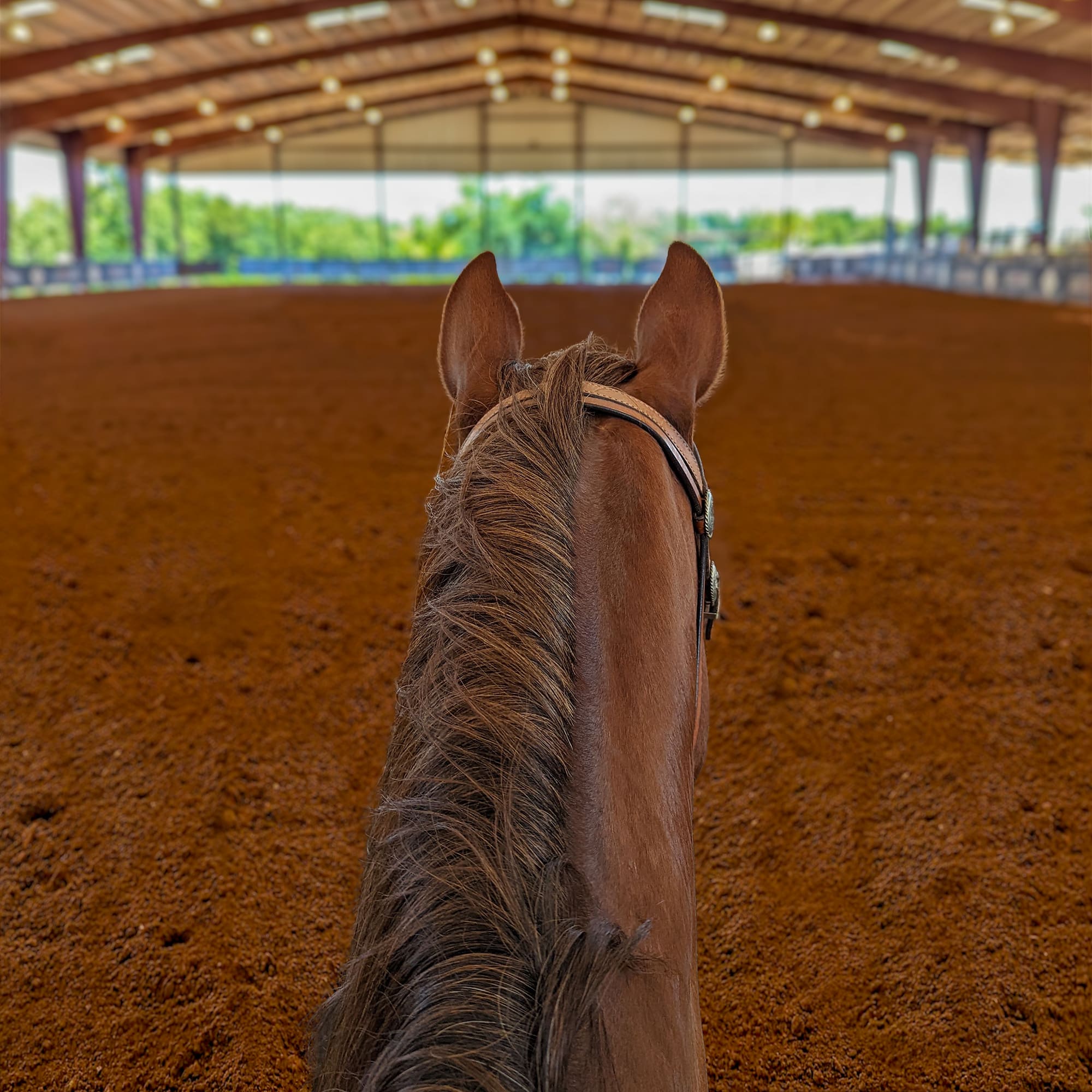Bitless or Bridle-less? To me, there’s a big difference. Often when I write about riding my horses bridle-less, people confuse it with the issue of riding bitless. To me, they are totally different subjects.
At expos and clinics, I am often asked, “Is it okay for me to ride my horse bitless?” It is presumed in this circumstance that you will use headgear of some sort– be it a rope halter, side-pull, hackamore or bitless bridle.
When I talk about riding bridle-less, I am referring to what I personally feel is the ultimate bond with my horse—to be able to ride complex maneuvers and patterns with nothing on his head and no reins or physical control of the head and no way to physically restrain the horse.
To answer the question of whether or not you should ride your horse bit-less (with some other form of headgear), I would ask you three simple questions: Do you ever have trouble stopping or turning your horse? Is your horse ever disobedient? Does your horse ever spook and bolt? If the answer to any of these question is yes, then personally, I would not want to be riding that horse bitless.
Truth is, most well-trained horses will work just fine bitless. Many horses actually work better bitless—with a rope halter, hackamore or bitless bridle for control–because they do not have the added stress of a rider who is inarticulate or unskilled with her hands or the harsh pressure of a totally inappropriate bit, both of which happen a lot more often than you might think.
There are many good reasons to ride a horse in some sort of bitless headgear—from dental issues to scarring on the tongue; from a young green horse to a sensitive horse with a heavy-handed rider. As long as you have adequate control of your horse at all times, there’s certainly nothing wrong with going bitless.
Limitations may come into play when you are training a horse without a bit, when you ask for more difficult things like collection, jumping, rollbacks, etc. The more difficult it is for the horse to comply with your request, the more likely he will be to ignore the pressure on his nose. He may well make the decision that he’d rather live with the pressure on his nose than do the more difficult thing that you are asking.
The bit is one tool that riders use to allow you to put enough pressure on the horse to motivate him to do things he isn’t otherwise motivated to do. Sort of like a person being willing to work overtime if he makes time-and-a-half, a horse is more motivated to do hard stuff in order to avoid pressure on the bit.
For myself, my ultimate goal with my horse is to be so bonded, so in-sync with, so in-control of him that I don’t need any head gear at all. When my horse is so obedient that he says, “Yes sir Captain! Your wish is my command,” and he listens intently to my body position and gestures for cues as to the direction and speed of the course I have chartered for us, it is truly an accomplishment. Get Julie Goodnight’s Neck Rope HERE
This is not a relationship that develops overnight; however, with a horse that is already well-trained, experienced and willing, it can be accomplished quickly, if the rider has enough skill. A horse that is responsive, compliant, willing and eager to please, that is finished in his cues, can perform complex maneuvers, has a good work ethic and is respectful of authority, is years in the making and usually involves a bit and a skilled rider.
Once I start riding a horse bridle-less, I still constantly revert to riding with the bridle, to reinforce as needed to keep my horse honest, sharp in his responses and to develop new skills.
The bit, or more accurately, the rider’s hands, can be the cause of many, many training problems. The wrong bit in a horse’s mouth can cause problems as well and the right bit can resolve lots of problems, as you may have seen on many episodes of Horse Master. A bit cannot train a horse, only a skilled rider can; but it can sure cause a lot of problems.
On the other hand, the bit is a communication tool that when used properly— not as a cue, but as reinforcement of a cue and only as needed—can assist the rider in developing the performance and cooperation of the horse. To me, the bit allows us to develop a fine line of communication between horse and rider—so fine that the horse can perform incredible maneuvers, cued only from the rider’s seat, legs and gestures and without the need of any type of bridle.
Enjoy the ride,
Julie
PS- I always enjoy your comments here in my blog– thank you for contributing to an interesting discussion!
Training Video



